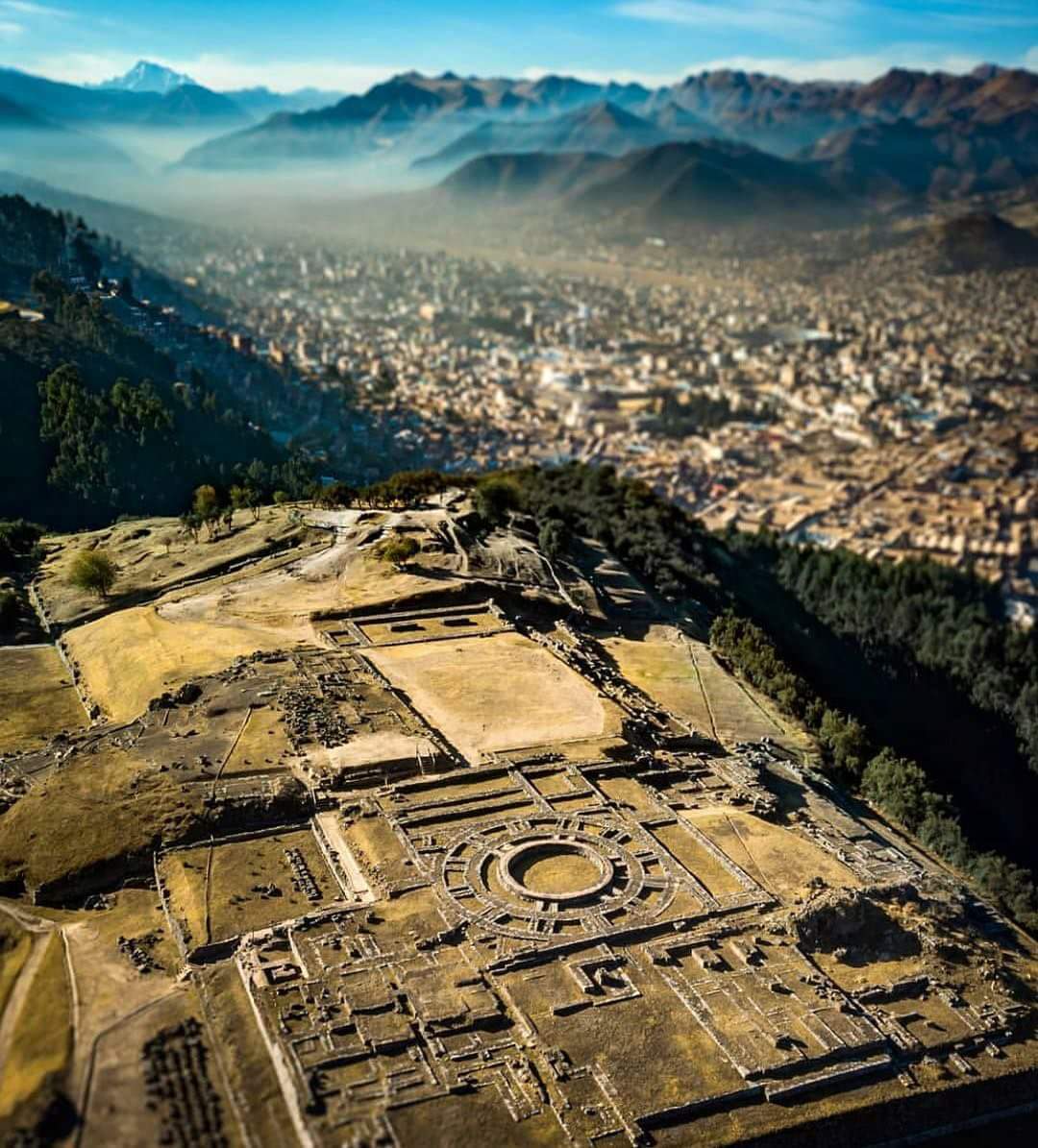Megalithic Madness At Sacsayhuaman
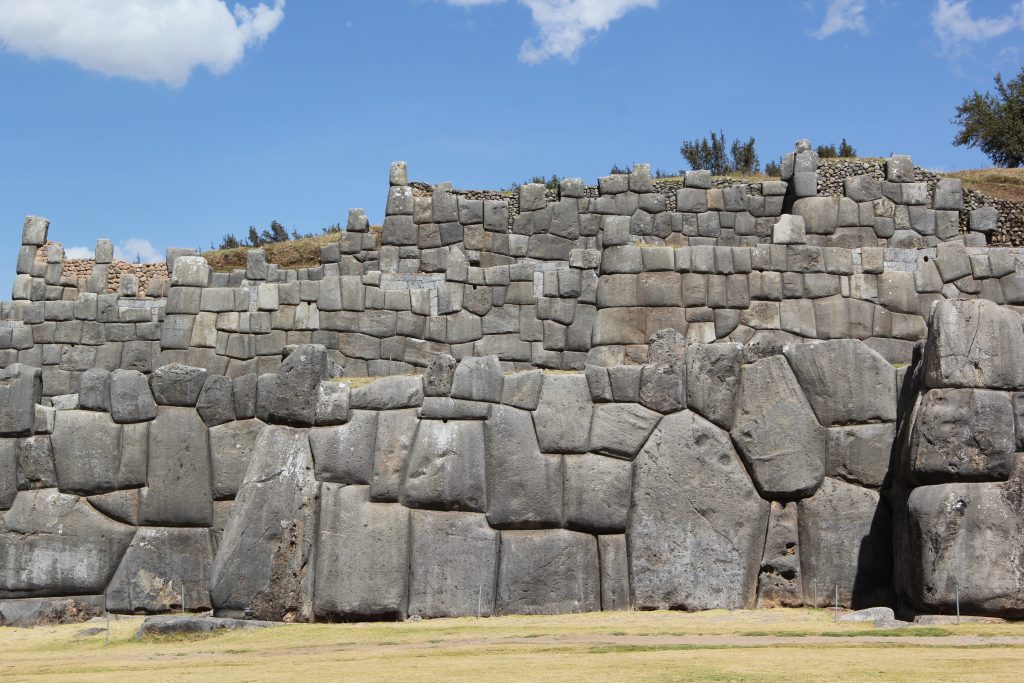
Standing at an altitude of 3,701 m (12,142 ft) on the outskirts of Cusco, true megalithic madness is on display at Sacsayhuaman. With its incredible walls, it’s a real wonder of proportions and engineering.
The name literally means “satisfied hawk”. This name derives from the Quechua language and refers to a falcon, as the Inca believed this was the dwelling place of the falcon the guarded over the first Inca, their “Adam”, Manco Capac.
Mainstream archaeology maintains it was built by the Incas between about 1438 and 1500, under the dominion of Pachacútec, and stands in a dominant position on the hill of Carmenca, which stands north of the city of Cusco, the ancient capital of Tahuantinsuyo, the Inca empire.
At each summer solstice, Inti Raimi is celebrated, the feast of Inti, the god of the sun. In this circumstance, rituals dating back to the Inca era are still performed.
The grandiose complex has a triple order of walls, three hundred meters long, made with enormous stone blocks (porphyry and andesite), connected with great precision. The main wall is made up of stones 5 meters high, about 2.5 meters wide which can weigh between 90 and 120 tons.
Although the place is named after the falcon, and researchers agree it was built in the shape of a puma, another sacred animal, by looking at some of its features we can realize how the structure is deeply tied to the serpent, a symbol also associated with the gods of Mesopotamia/Egypt.
As a matter of fact, the snake figure is carved and impressed on one of the rocks.
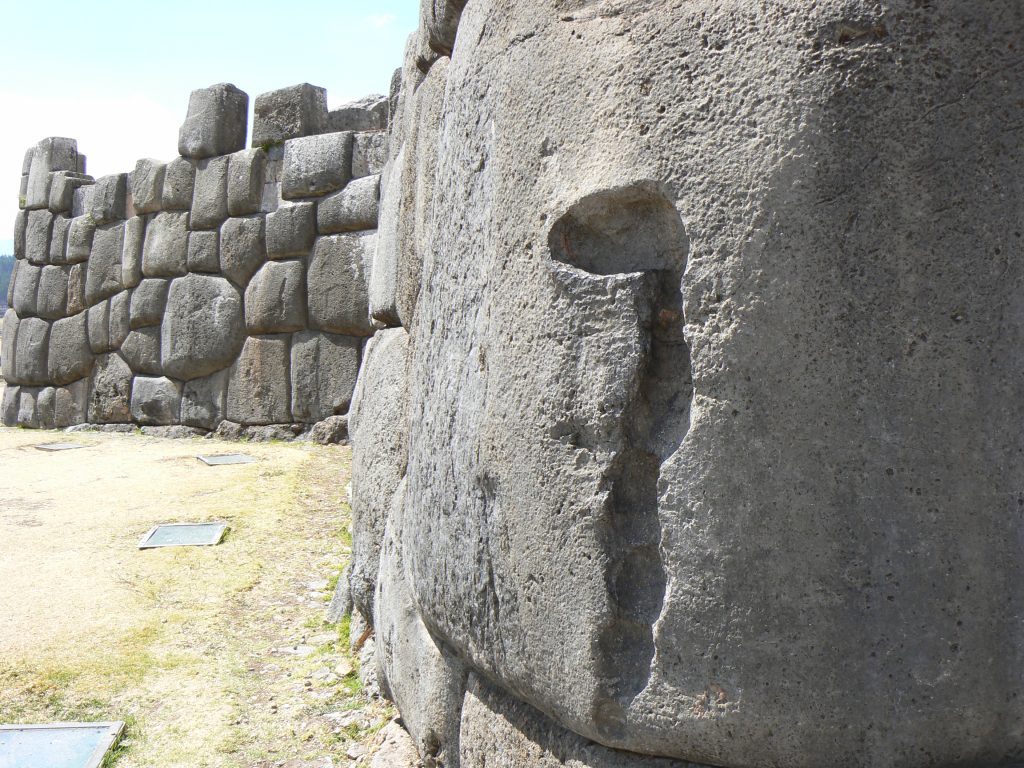
Not only, but a serpent is also represented directly into one of the walls, with the megalithic blocks placed together to form its image, shown in the picture below.
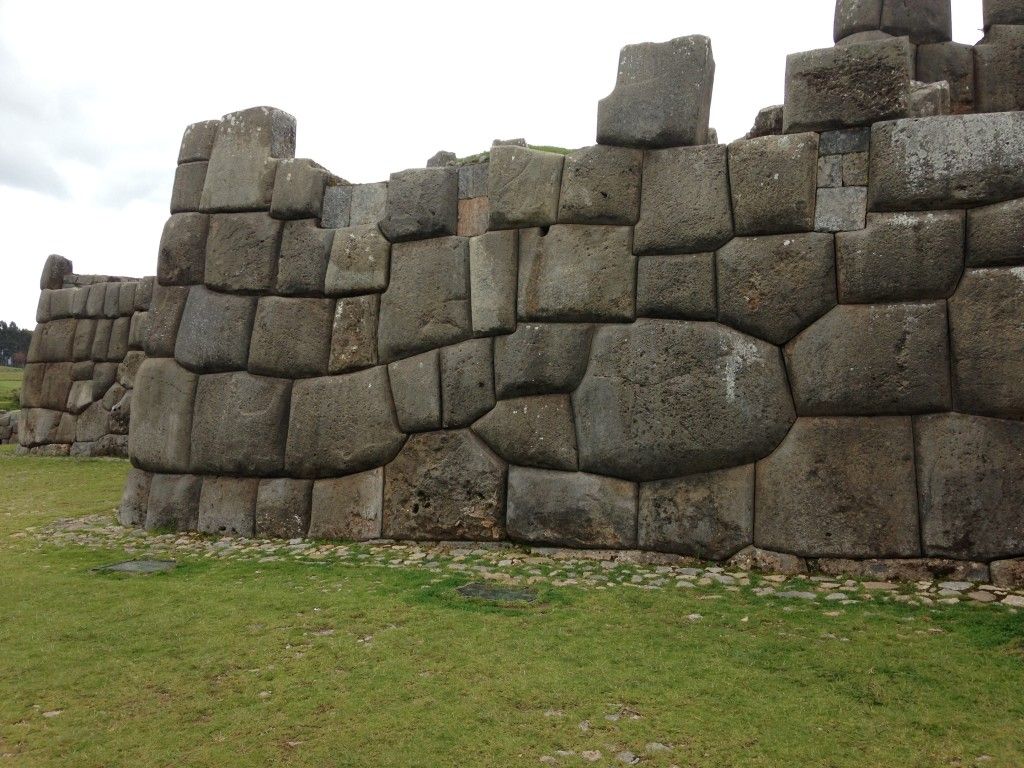
The megalithic madness at Sacsayhuaman doesn’t end here. If we see the three lines of walls from above, the megaliths clearly form a wavy pattern relatable to a snake.
Mainstream archaeology, by maintaining that the monument was dedicated to the puma, sees in the wavy pattern of the lines a resemblance with the jaws of the puma. However, the fact that the serpent was carved on some of the rocks leaves little to no doubt.
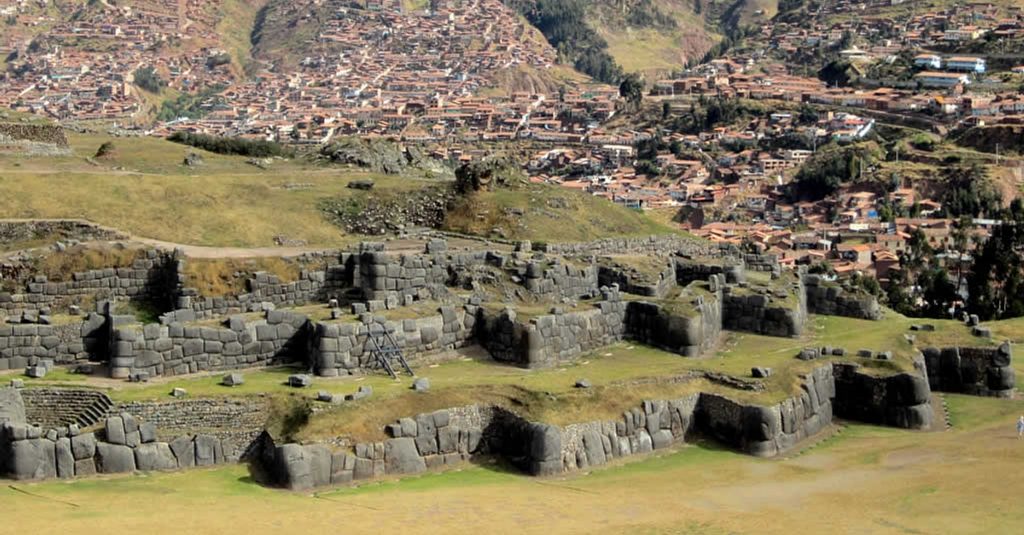
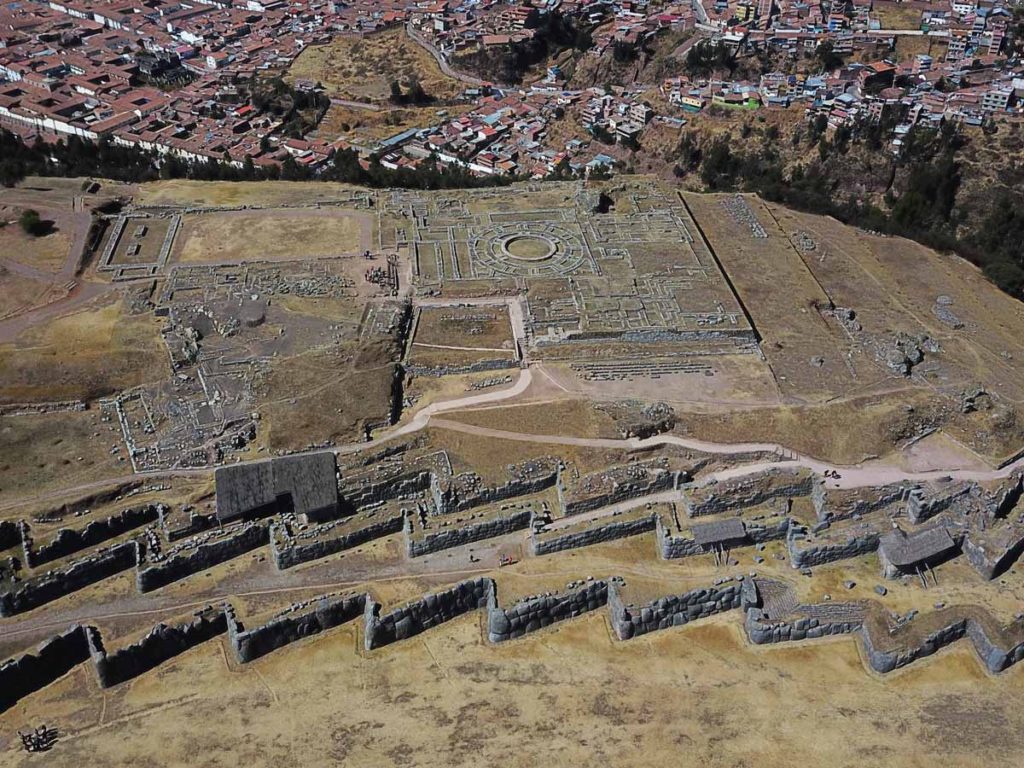
Although we can see from the doors how they were able to perfectly square the blocks, the ending megalith of each oblique line is finely rounded to represent the curves of the serpent.
Just like the Nazca Lines, this feature can only be appreciated by watching it from above.
Some researchers believe it was built by the Kilke Culture at about 1100 AD and later expanded by the Inca, because of the remains of pottery found at the site.
However, their numerous, recognizable archaic attempts at renovating the structure with small, rough stones, as shown below, suggest that both the Killke and the Inca people settled within the already existing walls which they considered to be sacred.
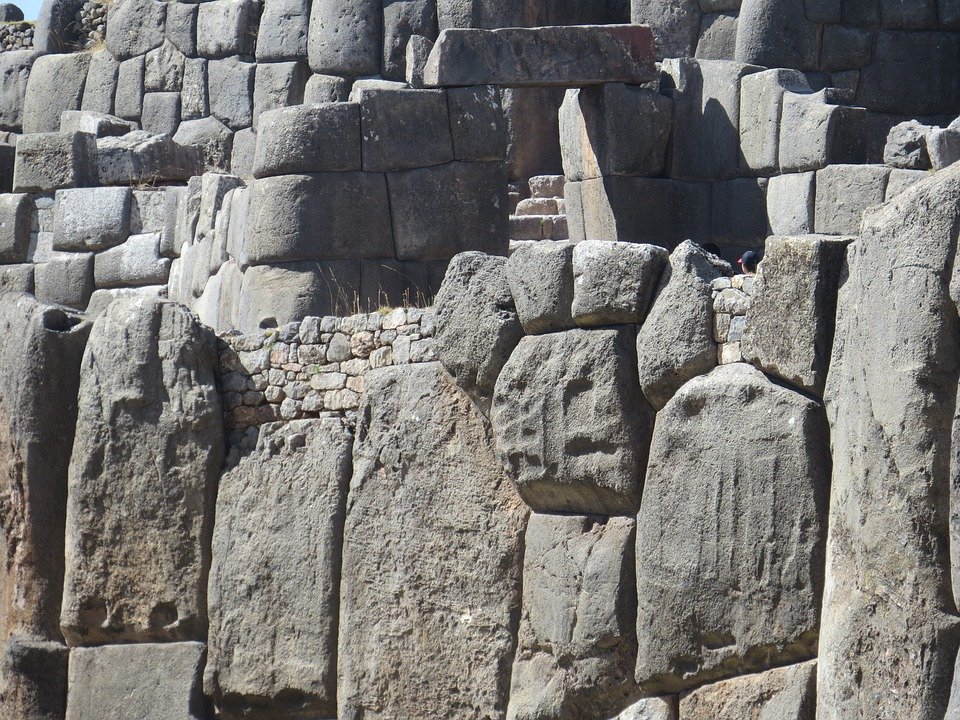
The way the walls are engineered makes them highly antiseismic. As a matter of fact, they withstood the several tremendous earthquakes that struck Cuzco.
Like P. Pizarro wrote, when the conquistadores first saw the walls, they were puzzled at how the Inca could’ve built them, as it was clear that they didn’t have the tools to craft such stones.
Some 500 years later their question is still unanswered, and history gave us nothing but the direct testimony of the local people in the form of mythological account about giant demi-gods in the fashion of the Greek and middle-eastern folklore:
«… The Gentiles had lifted and cut those immense piers. They said that also in Cuzco the temple-fortress of Saqsaywamán, with its huge blocks, was the work of the auki, the semi-divine ancestors who made the rocks move by whipping them, as cattle gather.”
Inside the lines of megalithic walls, are the remains of the ancient settlement that once stood inside the fortress.
